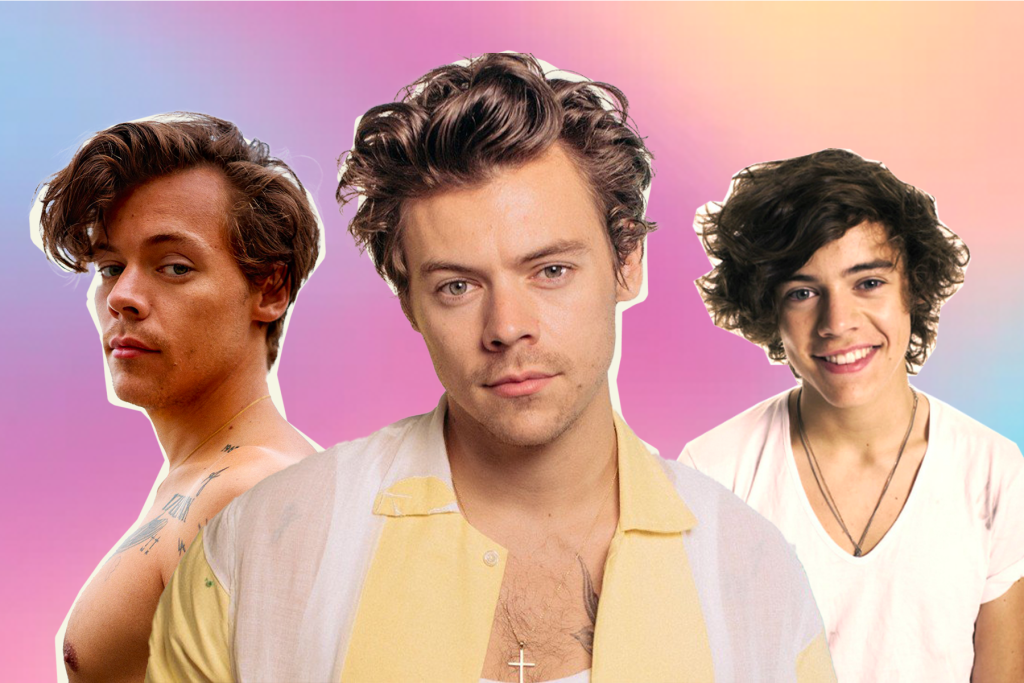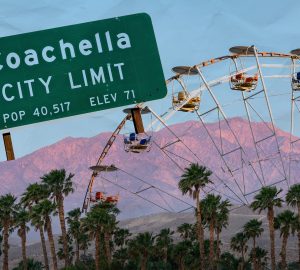
It’s hard to argue that any man in pop had a better 2022 than Harry Styles. Between two Blockbuster movie roles, a number-one single, and two Grammy wins, it seems like Styles has been everywhere lately.
Following One Direction’s extended hiatus in August of 2015, he began a solo carer with his debut self-titled “Harry Styles.” Although it was critically acclaimed, it was met with little attention from the public, and ended up going under many’s radars. However, in between that and the release of his next project, Styles would undergo a semi-public pivot into a much more colorful persuasion.
The Rise
Fans of Styles’ had always understood him to be queer to some degree. The pop star was known to make off-handed references to kissing guys or not wanting to shy away from a relationship just because the other person may be the same gender. But everything was very hush-hush, under the table, blink and you’d miss it ordeals. However, by as early as 2018, Styles was being spotted wearing makeup, painting his nails, and sporting more feminine silhouettes with his clothing.

By 2019, we had articles being released about Styles identifying as being above binary understandings of sexual identity. This was followed by a Vogue cover in December which showed him proudly posed in a dress. This struck intense controversy, as many big figures in the online conservative space having a field day talking about how he was a symbol of the Left’s attack on masculinity. All of this proved to be arguably good press, as this same month was the release of Styles’ second album “Fine Line,” which ended up selling triple the amount of units from his last album.
Harry’s High
Style’s name only grew from there. Throughout 2020 and 2021 the star released trending music videos, a number one single, as well as his extremely successful world tour. And by 2022, he was the name in everyone’s mouth. Partly because of his third album, “Harry’s House” debuting at number one in the UK, being the fastest selling album of the year, and having one of the most streamed songs of 2022,“As It Was.” But also because he was featured as the romantic lead in two major films. One being “Don’t Worry Darling” where he was with a female co-star, and the other being “My Policeman” where he was with a male co-star. Through all these giant achievements, there’s been a bubbling resistance to him from LGBT spaces. Most of which painting him as the dreaded “Gay for Straight”.
Is everyone going to drag Harry Styles for his Gucci campaign? Or are you all going to let him slide since he’s great at queerbaiting you?
— Gerardo Becerril (@Queen__Gerardo) December 23, 2022
What is Gay For Straight?
Gay for Straight is a controversial term in that it can sound alienating to the untrained. A surface understanding of the phrase breeds questions like “Who are we to question someone else’s identity?” and “I thought pride was all about acceptance.” But what we must understand is that the discourse isn’t about Harry Styles the person, but Harry Styles the figure. The brand, the pop star and what we are saying by putting a rainbow sticker on all his albums. It is completely reasonable if Styles the person doesn’t want to label himself, and/or deal with overly categorizing himself for millions of people. However, in regard to Styles the icon, the nebulous direction toward his artistry comes off to many as performative.
Taylor ending with the mass buying and the queerbaiting, she's an icon
— sometimes stan (@ny23agrl) December 19, 2022
Sure, he may wear nail polish and occasionally can be seen in a dress, but nothing in his music makes it explicitly clear that he is singing about a man, whereas he does have songs that make it clear he’s talking about a woman. His music videos only show him expressing attraction toward women, but we never had a visual of Styles being with a man until the release of “My Policeman.” But of course, this isn’t him, just him playing a character. These distinctions matter not because queer people care to make them, but because homophobes care to make them. They know that all of these things can and will be used to deny any queer readings of Style’s work, and then turned into ammunition for how “the gays are trying to convert us all to be one of them!”

Other Popstars
Contrast this with other pop acts like Troye Sivan or Zolita. Both individuals identify as gay and who’s music, marketing and related visuals make it quite clear that their art is super-duper not straight. However, they are less promoted than Styles, hence another layer to the distain.
Despite his choice to not have a set identity, Styles is reaping the rewards of being an out and proud artist. Despite the push back, the rainbow label are being placed on his albums. Conservatives and online circles are lifting him as a “queer” musician. And with that comes a rhetoric that gay people shouldn’t expect music that directly discusses their experiences, but rather find themselves in the nooks and crannies of “maybe” gay lyrics. And so in a way there’s no winning.
Style’s Inspirations
Styles has made it clear that three of his biggest inspirations are David Bowie, Freddie Mercury and Elton John. All men, who at their hay days, were known to play around with gender expression and androgyny but now are understood to be super duper not straight. And a lot of them described their identities similarly to Harry, so it makes sense he would see himself in them. But they in turn, relate to him in that they all benefited from launching their characters under the assumption that they were straight. However, that’s not a choice for everyone in the community.

Many don’t get to choose who they tell because they are assumed to be gay just for liking Björk and being a barista. These are gay things, but that doesn’t change that their identities are out of their hands. So there should be space for pop stars that represent that community, because there will always be enough representation for men who like women.
The controversy around Harry Styles isn’t one that will die with him but continue as long as being queer can get you murdered on the street. Although it is important to respect the private lives of our entertainers, it is also extremely valid to question the messages that their PR teams are funneling to us. As consumers of pop culture none of us should be expected to have to search for representation, nor should we have to defend when art is most likely made with us in mind. There’s no telling where the future of Styles’ career, and the future of pop music is headed, but hopefully it’ll dock somewhere that everyone can express themselves however they see fit.
D Shaw























